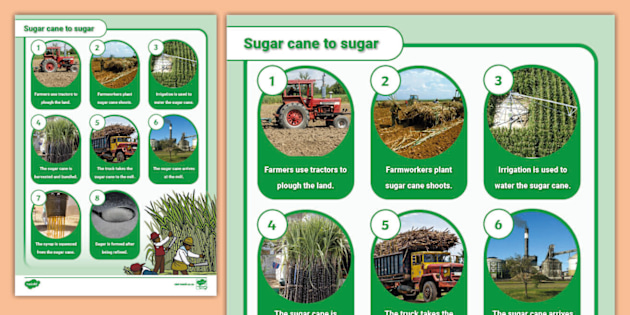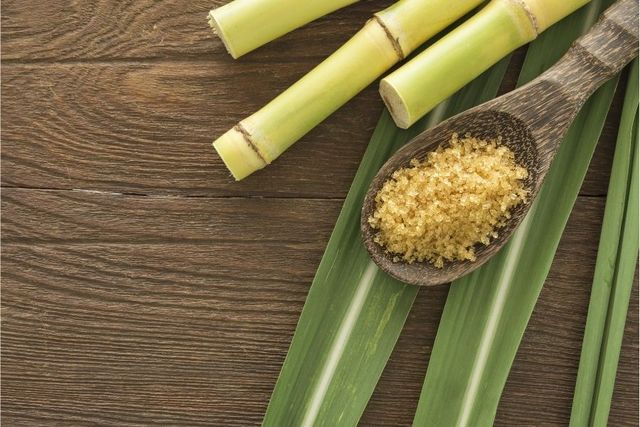Comprehending Just How Sugar Canes Job: What Are Sugar Canes Used For in Food and Beyond?
Sugar canes are essential to numerous elements of both industrial and culinary techniques. Their versatility enables them to be transformed right into sweeteners, beverages, and also biofuels. As one discovers the journey from growing to handling, the diverse applications of sugar canes reveal an intricate interplay in between agriculture and sector. Nonetheless, the ramifications of sugar cane manufacturing extend past plain energy, increasing concerns concerning ecological sustainability and economic impact.
The History and Origin of Sugar Canes
Commonly taken for approved in modern-day diet plans, the history and origin of sugar walking canes reveal a complicated journey that extends thousands of years. Indigenous to Southeast Asia, sugar walking cane was initial grown around 8000 BCE, with its wonderful juice coming to be highly valued by early civilizations. By the first millennium advertisement, it infected India, where it was refined into taken shape sugar, a notable advancement that transformed its use and trade. The intro of sugar walking stick to the Mediterranean happened around the 7th century, thanks to Arab traders, who identified its economic potential.During the Age of Exploration, European homesteaders established sugar haciendas in the Caribbean, substantially influencing worldwide trade. By the 17th century, sugar ended up being an essential commodity, fueling economic situations and affecting social structures. The tale of sugar walking sticks is intertwined with farming, business, and social exchanges, noting its relevance fit modern-day financial systems and culinary methods.

Farming and Collecting Practices
The cultivation and harvesting of sugar canes include a number of essential practices that determine the quality and return of the crop - What Are Sugar Canes Used For. Trick aspects include reliable soil preparation strategies, precise planting techniques, and efficient gathering approaches. Comprehending these practices is crucial for maximizing production and guaranteeing sustainability in sugar walking cane farming
Soil Preparation Strategies
Efficient dirt preparation strategies are crucial for effective sugar walking cane farming, as they lay the foundation for healthy and balanced development and optimal return. The procedure starts with soil testing to analyze nutrient levels and pH balance, enabling tailored modifications. Raking and tilling are after that employed to aerate the dirt and break up compaction, enhancing root penetration. Incorporating raw material, such as compost or well-rotted manure, improves soil fertility and framework. Additionally, proper drain systems are critical to prevent waterlogging, which can prevent walking cane growth. Cover chopping may additionally be used to suppress weeds and improve soil health. These practices collectively ensure that sugar walking cane has the very best atmosphere to prosper, causing robust plant health and wellness and boosted efficiency.
Planting and Development
Effective planting and development methods are important for maximizing the return of sugar walking stick. The procedure starts with selecting healthy and balanced seed walking canes, which are sections of mature stalks abundant in buds. These seed walking sticks are commonly planted in well-prepared dirt, ideally at a depth of 4 to 6 inches, guaranteeing ample wetness and aeration. Sugar walking cane grows in warm climates with enough sunshine and requires regular irrigation, especially during completely dry spells. Fertilization with potassium, phosphorus, and nitrogen is important to promote robust growth. Weed control is additionally essential, as competition can impede growth. Regular surveillance of plant health and dirt conditions enables timely interventions, eventually bring about an effective crop that fulfills market demands.
Harvesting Methods
Collecting sugar cane needs careful planning and implementation to ensure maximum yield and top quality. Commonly, the harvest happens when the walking cane reaches optimal sugar material, frequently in between 12 to 18 months after growing. There are two main methods: guidebook and mechanical harvesting. Hand-operated harvesting includes laborers using machetes to cut the stalks at ground degree, making sure minimal damage to the plant and soil. In contrast, mechanical harvesting utilizes specific devices that reduced, cut, and deliver the walking cane, boosting effectiveness and decreasing labor expenses. Mechanical approaches can lead to higher dirt compaction and loss of nutrients. No matter of the technique, timely harvesting is essential, as delays can result in lowered sugar quality and raised sensitivity to pests and illness.
Handling Methods for Sugar Extraction
The processing of sugar cane is a crucial stage in sugar manufacturing, incorporating several crucial techniques - What Are Sugar Canes Used For. Collected walking stick undergoes juicing and crushing to remove its sweet fluid. This juice then continues through purification and formation, transforming it into the sugar most typically used today
Harvesting Sugar Walking Stick
Sugar walking cane gathering marks an essential phase in the production process, where timing and technique play important functions in optimizing yield. Typically, the harvest happens when sugar content goes to its top, which varies based on climate and growth conditions. Employees utilize specialized tools or guidebook tools to cut the cane at the base, guaranteeing very little damage to the plant. Correct strategy is important; cutting too high can minimize the top quality and amount of the sugar removed linked here later. After cutting, the cane must be carried promptly to refining centers to avoid wasting and sugar deterioration. The effectiveness of the harvesting process significantly affects the total performance and profitability of sugar cane farming, making it a vital focus for producers.
Squashing and Juicing
Once sugar walking cane is collected, the next important step includes crushing and juicing to remove the sweet fluid which contains sucrose. This procedure commonly uses hefty equipment made to squash the stalks, damaging down the fibrous structure and launching the juice. Rollers or mills use considerable pressure, enabling the walking stick juice to spurt while separating the fibrous deposit, called bagasse. When smashed, the walking cane is commonly subjected to a series of pressing phases to make best use of juice removal. The collected juice is abundant in sugar and may consist of contaminations, which will be addressed in later handling actions. Overall, squashing and juicing are crucial methods that change harvested sugar walking stick into a liquid kind suitable for further improvement.
Filtration and Crystallization
Purification and condensation are essential processes in transforming raw walking cane juice right into refined sugar. After drawing out juice from crushed sugar canes, the liquid has pollutants such as plant fibers, minerals, and proteins. To accomplish filtration, the juice undergoes explanation, where warm and lime are included to speed up contaminations, which are after that eliminated. The cleared up juice is after that concentrated through dissipation to form a thick syrup.Next, crystallization occurs, where sugar crystals develop as the syrup cools. This process usually includes seeding the syrup with existing sugar crystals to promote uniform development. The resulting crystals are divided from the remaining molasses through centrifugation, generating pure sugar. This polished product is after that dried and have a peek at this site packaged for numerous culinary uses.
Culinary Uses of Sugar Canes
While often linked mostly with sugar, sugar walking sticks provide a flexible series of culinary applications beyond their role in sugar manufacturing. Fresh sugar cane can be juiced, yielding a pleasant, stimulating beverage enjoyed in several exotic regions. This juice functions as a base for shakes and mixed drinks, adding an one-of-a-kind flavor profile.Additionally, sugar walking cane syrup, originated from boiling down the juice, is used as an all-natural sweetener in numerous dishes, from marinates to treats. The syrup passes on a rich, caramel-like taste, improving both sweet and tasty recipes.In some foods, sugar walking stick stalks are barbequed or baked, providing an unique smoky taste that matches meats and vegetables. Sugar walking stick can be included into desserts, such as sweets and puddings, where its sweetness and coarse texture create fascinating contrasts. In general, sugar walking sticks add to both typical and ingenious culinary developments throughout varied cultures.
Industrial Applications Beyond Food
Beyond their cooking usages, sugar canes play a significant function in numerous commercial applications, adding to markets such as bioenergy, paper production, and bioplastics. The coarse product of sugar walking stick is made use of in the manufacturing of biofuels, particularly ethanol, which works as a renewable resource resource that decreases dependence on fossil fuels. In the paper industry, bagasse, the coarse residue left after juice extraction, is refined right into pulp for paper and cardboard manufacturing, promoting sustainable techniques by making use of waste. In addition, advancements in bioplastic innovation have brought about the growth of eco-friendly plastics originated from sugar walking cane, using a green option to standard petroleum-based plastics. These industrial applications not only enhance the worth of sugar walking sticks but likewise align with international activities in the direction of sustainability and renewable energies, illustrating their adaptability past the cooking area.

The Environmental Effect of Sugar Cane Production
The production of sugar walking stick, regardless of its various industrial benefits, presents considerable environmental obstacles. Logging is often an effect, as large locations of land are removed to cultivate sugar walking cane, leading to habitat loss and biodiversity decrease. In addition, the extensive farming practices related to sugar cane growing can lead to soil destruction and disintegration. The heavy use pesticides and fertilizers to maximize yields adds to water pollution, negatively affecting water ecosystems.Moreover, sugar cane production is linked to increased greenhouse gas exhausts, especially via land-use changes and the burning of cane areas prior to harvest. These methods not only affect air top quality yet likewise add significantly to environment modification. On top of that, the water-intensive nature of sugar walking cane farming locations stress on regional water sources, affecting communities and ecological communities reliant on these supplies. Resolving these ecological effects is crucial for sustainable sugar walking stick production in the future.
Regularly Asked Concerns
Are There Wellness Advantages Surrounding Consuming Sugar Walking Cane?
The question of health and wellness benefits associated with sugar walking cane intake highlights potential benefits. Sugar cane might give hydration, important minerals, and anti-oxidants, but moderation is necessary as a result of its all-natural sugar content and feasible health and wellness effects.
Exactly How Does Sugar Walking Cane Contrast to Other Sweeteners Nutritionally?

Sugar walking cane provides natural sweetness, largely comprising sucrose, while other sweeteners vary in make-up and caloric material. Contrasted to fabricated alternatives, sugar cane gives nutrients, though it remains high in calories and carbohydrates.
Can Sugar Walking Cane Be Grown in Non-Tropical Regions?
Sugar cane primarily flourishes in exotic environments, needing warm temperature levels and abundant rains. While some non-tropical regions attempt growing, success is restricted because of insufficient heat and expanding seasons, making the original source large-scale manufacturing challenging.
What Are the Common Bugs or Illness Influencing Sugar Canes?
Common bugs impacting sugar canes include the sugarcane borer and aphids, while diseases like fallen leave scald and red rot pose considerable dangers. Efficient administration approaches are important for preserving healthy sugar walking cane plants and making the most of returns.
How Does Sugar Walking Stick Influence Local Economies?
The effect of sugar cane on neighborhood economic climates is significant, providing job opportunity, increasing farming industries, and adding to exports. Its farming sustains regional businesses and improves neighborhood advancement via increased revenue and infrastructure enhancements. Native to Southeast Asia, sugar walking stick was initial grown around 8000 BCE, with its wonderful juice coming to be extremely valued by early civilizations. The introduction of sugar walking stick to the Mediterranean happened around the 7th century, thanks to Arab traders, who recognized its financial potential.During the Age of Expedition, European colonists established sugar vineyards in the Caribbean, substantially impacting global trade. The processing of sugar walking stick is a crucial phase in sugar production, incorporating several key methods. While usually associated mainly with sugar, sugar walking canes offer a versatile array of cooking applications beyond their role in sugar production. The hefty use of chemicals and fertilizers to make best use of returns adds to water air pollution, negatively impacting marine ecosystems.Moreover, sugar cane manufacturing is linked to boosted greenhouse gas discharges, specifically with land-use modifications and the burning of walking stick fields prior to harvest.